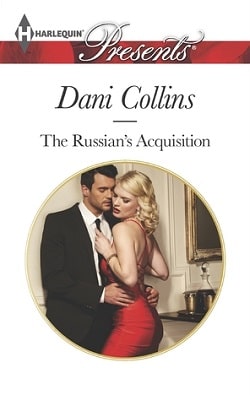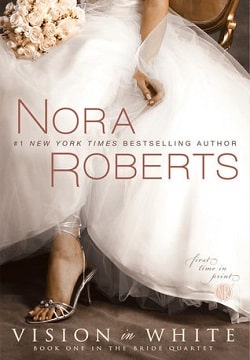The bathroom revealed nothing useful. Kandinsky had recently used a decongestant. An open package of nasal spray lay across the washstand. The pollen from ragweed will kill you this time of year . . . unless somebody with a gun gets you first..
I booted up the computer in what looked to be Kandinsky’s home office. However, in order to access anything, I needed the password. Damn. It could take forever to guess, and I didn’t want to accidentally lock myself out.
I upended waste paper baskets and pawed through the contents. Found an envelope addressed to Kandinsky, but no letter or return address. The handwriting was plain, block letter print. Very tidy.
I dug into the bedroom closet. A stack of folded papers bound with thick rubber bands hid behind a box on a shelf. Setting them on the bed, I eased one page out. It was a handwritten letter, the paper off-white and the writing neat and clear, but it appeared to have been written in Russian or some Cyrillic script.
I looked again and found one I could read. Based on the salutation and signature, it was a letter from Kandinsky’s son. It was dated a month ago and consisted of three sentences.
Dear Dad,
I’m sorry, but I can’t do what you’ve asked. I have to live my life the way I see fit. I hope you understand.
Love,
David
So, Kandinsky had a son, and apparently the father disagreed with the son’s life choices. An old story, if there ever was one—my story in fact. But what had Kandinsky asked of David? Did what Kandinsky ask lead to his own murder?
It occurred to me that Kandinsky’s son and Blaine’s daughter both had parent issues. Mere coincidence? Had Blaine even mentioned Kandinsky’s son?
Abandoning the search for the moment, I left the house. The street was as quiet and empty as when I’d gone in, but the clock was ticking. Commuters would soon be returning home from work. Even housekeepers or nannies in the neighborhood might become suspicious.
I returned to my car and checked the notes I took at Blaine’s house to see if he had mentioned Kandinsky’s son. Couldn’t recall him doing so and saw no mention of David there, but I noticed something else. I forgot that Blaine said it had been four days since he’d heard from Melissa. Based on what Melissa’s art instructor and her co-workers at Java Joe’s had said, she had been absent from school roughly two weeks. Why this time discrepancy?
Chapter Eight
I extracted my cell phone from my shoulder bag and called Blaine, leaving a message to get in touch with me as soon as possible. Then, I went back inside the Kandinsky house.
The time disparity between Melissa’s l
ast phone call with her father and the day she was last been seen at school worried me. Perhaps Melissa’s pride kept her from revealing that she had stopped going to class. After all, her father hadn’t approved of her career plans.
I considered some other possibilities. Had someone taken Melissa and forced her to call her father? Toward what end? I needed to get more details from Blaine about their last conversation. Given the circumstances, I had no reason to think he would hold anything back.
Just in case, I used my cell phone to take photos of the letters and put them back their proper place with the other papers. When I tucked the bundle back into the closet, I noticed a small blue binder with the words “Cherished Memories” embossed in gold on the cover. I picked it up and flipped through the plastic-encased photos inside. In a few of them, I saw Kandinsky posed with a woman. I also found photos with Kandinsky, the woman and a boy. Probably the son, David. One picture resembled a high school yearbook headshot of the boy, now a teenager. Based on the contents, it seemed that Kandinsky had fathered only one child.
I slid the most recent photo of David from its holder, set it on the dresser, and snapped a shot of it with my cell. I did the same for one photo of the woman. The closet in which I had found the photo album contained only men’s clothes. If Kandinsky and his wife or live-in girlfriend had been estranged, how hard did either of them take it? Did the presence of a woman in his life (or the lack thereof) pertain to his death?
After tucking the photo album away, I continued to search the closet and scanned the room. A brightly colored Russian nesting doll, of all things, sat on a bedside table. On a hunch, I took it apart. Inside the smallest doll, I found a key. I’d be skating on mighty thin ice if I took it. What would I do with it anyway?
For lack of other options, I tore a page from the notebook in my shoulder bag. Pressing the paper onto the key, I took a pencil and ran the point sideways, back and forth, atop it. I managed to make a very rough outline of the key’s shape, ridges and indentations. Turning it over, I repeated the process. Far from perfect, but it would have to do.
I also took a photo of the key and noted the alphanumeric code engraved on it. With this information, maybe a locksmith could provide a lead on what the key opened.
I slipped out the door and hurried to my car, leaving Kandinsky’s body for someone else to find.
On Route 40, one of Ellicott City’s main roads, I found a Home Depot. Whether I’d find a real locksmith there was another question. I decided to take my chances, so I pulled into the shopping center’s parking lot.
I had a hunch the key opened a safe deposit box. If so, then getting access could be a problem. Unless I could track down Kandinsky’s son or the woman who appeared to be his wife. In any case, Kandinsky’s death left someone as his heir. Maybe more than one someone.
I found an elderly man who made keys in the hardware section. Unfortunately, he had no more clue than I did about what the key would unlock, but he was able to tell me where to find the nearest locksmith—right in the heart of old town.
I left the store and headed down Route 40 to Rogers Road, which led to the county courthouses. Taking a right, then another, I ended up on Ellicott City’s Main Street. This part of town had suffered a series of devastating floods over the years, but had somehow managed to endure. Whether the history of old town Ellicott City merited the residents’ continued allegiance to doing business there—come flood, come whatever—had escalated into an ongoing controversy. The place was an environmental disaster area and a journalist’s dream.
The narrow road was lined with historic buildings, crammed together. It plunged downhill in a set of curves, past a rocky outcropping, toward the old mill and the railroad bridge. The locksmith’s shop was wedged between a tobacconist store and a place that sold used hippie clothes.
Main Street’s crowded curbs left me no place to park my car. I ended up leaving it in a small lot alongside the bridge and walking down the hill toward the shop. As I approached, the stench of patchouli from the hippie store nearly knocked me on my ass.















